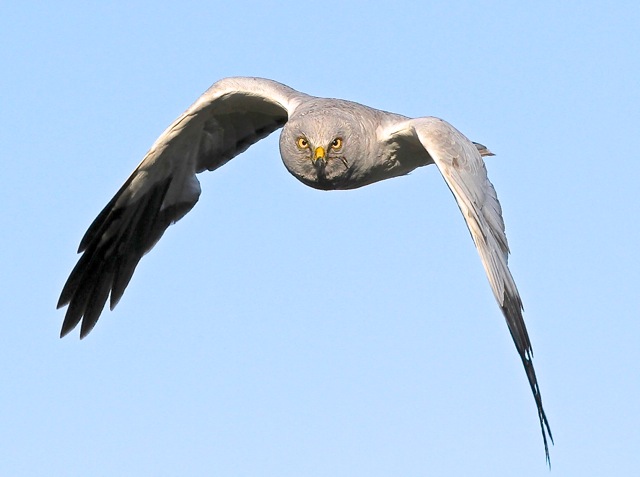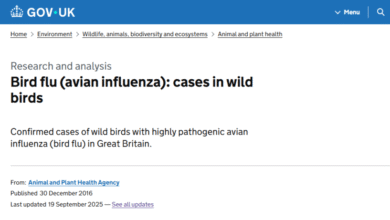 To make sense of the figures for 2023 UK Hen Harrier numbers, released today by RSPB, they need to be seen in context. There are five important contextual considerations.
To make sense of the figures for 2023 UK Hen Harrier numbers, released today by RSPB, they need to be seen in context. There are five important contextual considerations.
- There are pretty good estimates of how many pairs of Hen Harriers could exist in different parts of the UK in the absence of illegal persecution and those suggest that, overall, the UK population is at between a third and a fifth of its potential depending on the year.
- We have a long run of Hen Harrier surveys, carried out in a comparable way, stretching back over three and a half decades (see Table below). There is little value in just focusing on the comparison with the last survey when we have a run of data. Particularly because…
- …Hen Harriers have good years and bad years in terms of whether their main prey in the breeding season are abundant enough for few or many pairs to settle and breed. Like Short-eared Owls (but less so than SEOs) we think Hen Harriers sometimes decide not to settle, or give up very early in the season, if there aren’t enough voles in their area. There are good vole years and bad vole years but these vary across the UK so there is a patchy picture. However, whether your survey year is better or worse than average for voles is likely to affect the survey results either a bit, or a lot, and without rather complex and expensive UK-wide vole data, we have to realise that there is this variation between years.
- Hen Harriers move around – they can move around between years and they move around by moving from the moors where they mainly nest to southern parts (sometimes out of the UK) and to lowland and coastal areas in winter. And so the three Hen Harriers I saw coming in to roost at Wicken Fen in early March might just conceivably have been single English, Scottish and Welsh birds, and their fate will be determined not just by the conditions on their nesting grounds, or their wintering grounds, but on their journeys between the two.
- Illegal persecution on grouse moors continues and is a potent factor in determining numbers.
Here are the results:
Hen Harrier Surveys
| Potential pairs | 1988/89 | 1998 | 2004 | 2010 | 2016 | 2023 | |
|---|---|---|---|---|---|---|---|
| Scotland | c1700 | 479 | 436 | 633 | 505 | 460 | 529 |
| England | c330 | 18 | 19 | 10 | 12 | 4 | 50 |
| Wales | c250 | 27 | 28 | 43 | 57 | 35 | 40 |
| Northern Ireland | c150 | 10 | 38 | 63 | 59 | 46 | 34 |
| UK total | c2500 | 534 | 521 | 749 | 633 | 545 | 653 |
What should we make of them?
- The UK Hen Harrier population is at about a quarter of its potential level (compare ‘2023’ with ‘Potential Pairs’) and that’s not good when we believe that this lack is largely due to illegal persecution. However, despite that, 2023 was…
- …overall a good year for Hen Harriers across the UK; numbers were good, not just compared with the last survey but compared with the year before and the run of surveys going back a long way. This is not true of Northern Ireland. It is true of England where the number of pairs was not just higher, much much higher, than in the previous survey year but was also higher than the previous four survey years combined.
- Despite having a very good year in 2023 (which we also know has been preceded by a run of improving years) England is still the worst performing country, compared with potential, of the four UK nations. Scotland is best (despite the fact from previous surveys that eastern grouse moors are basically Hen Harrier-free zones), Northern Ireland is second best (even though this year was a relatively poor year there), Wales is second worst and England, despite a much better 2023 than previous surveys is still worst. If the situation in England were similar to Northern Ireland then we would have something like 75 pairs of Hen Harrier in England now. I once supported a lower-league football team and we had good years and bad years but we were lower-league all the same – England is still lower-league for delivering Hen Harriers. It will take continued improvement (at a greater rate than other nations) for England to get anywhere near Northern Ireland in this respect.
- This is speculation, but informed speculation; I wonder whether the increases in Hen Harrier numbers in Scotland and Wales are partly due to reduced spring persecution in England. There must be reduced spring persecution in England because there are more Hen Harriers, and harriers passing through England to other nations may benefit from this too.
[registration_form]
Source link




